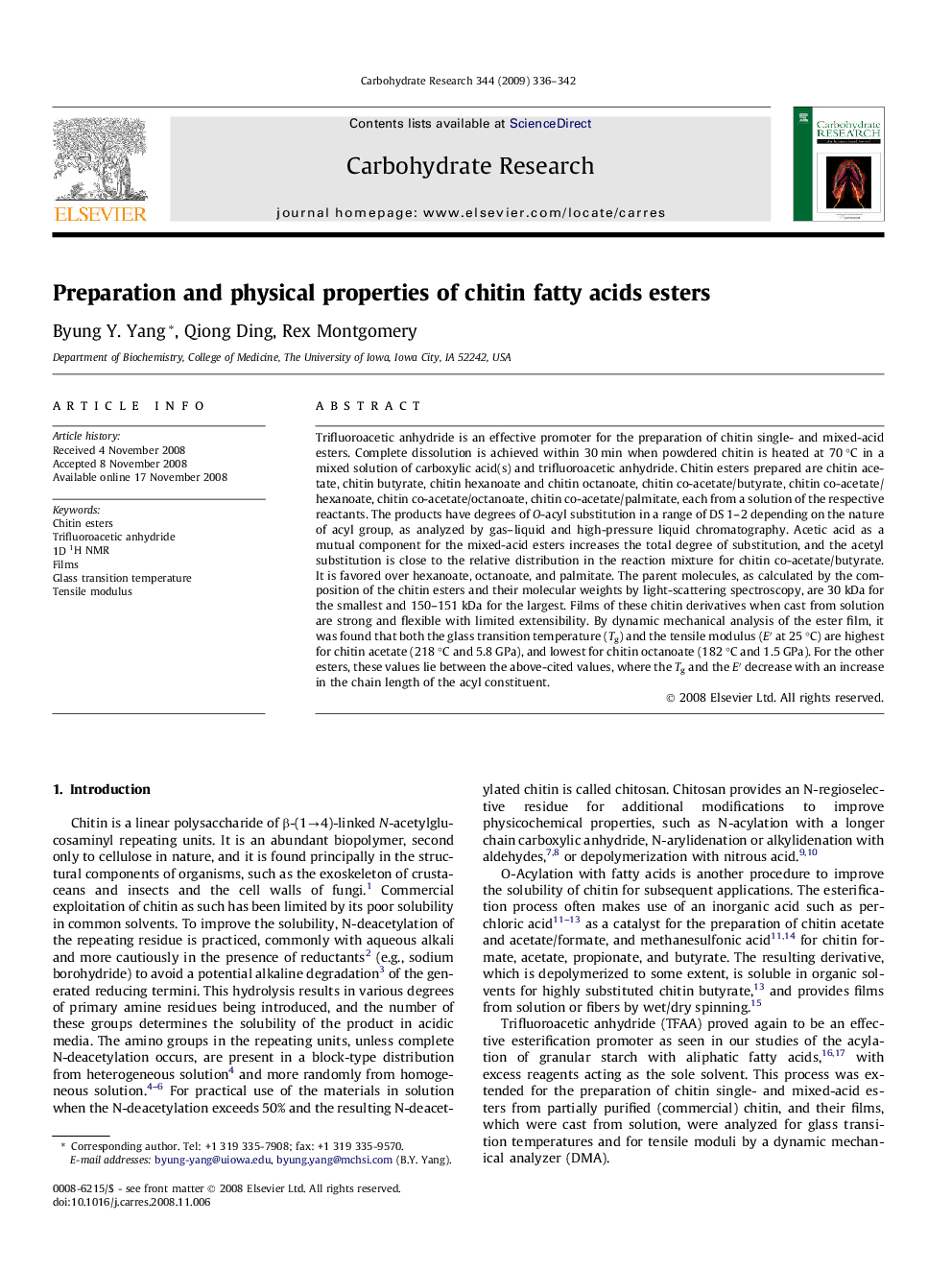| Article ID | Journal | Published Year | Pages | File Type |
|---|---|---|---|---|
| 1389599 | Carbohydrate Research | 2009 | 7 Pages |
Trifluoroacetic anhydride is an effective promoter for the preparation of chitin single- and mixed-acid esters. Complete dissolution is achieved within 30 min when powdered chitin is heated at 70 °C in a mixed solution of carboxylic acid(s) and trifluoroacetic anhydride. Chitin esters prepared are chitin acetate, chitin butyrate, chitin hexanoate and chitin octanoate, chitin co-acetate/butyrate, chitin co-acetate/hexanoate, chitin co-acetate/octanoate, chitin co-acetate/palmitate, each from a solution of the respective reactants. The products have degrees of O-acyl substitution in a range of DS 1–2 depending on the nature of acyl group, as analyzed by gas–liquid and high-pressure liquid chromatography. Acetic acid as a mutual component for the mixed-acid esters increases the total degree of substitution, and the acetyl substitution is close to the relative distribution in the reaction mixture for chitin co-acetate/butyrate. It is favored over hexanoate, octanoate, and palmitate. The parent molecules, as calculated by the composition of the chitin esters and their molecular weights by light-scattering spectroscopy, are 30 kDa for the smallest and 150–151 kDa for the largest. Films of these chitin derivatives when cast from solution are strong and flexible with limited extensibility. By dynamic mechanical analysis of the ester film, it was found that both the glass transition temperature (Tg) and the tensile modulus (E′ at 25 °C) are highest for chitin acetate (218 °C and 5.8 GPa), and lowest for chitin octanoate (182 °C and 1.5 GPa). For the other esters, these values lie between the above-cited values, where the Tg and the E′ decrease with an increase in the chain length of the acyl constituent.
Graphical abstractFigure optionsDownload full-size imageDownload as PowerPoint slide
